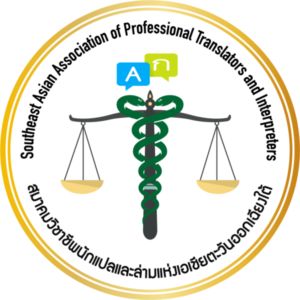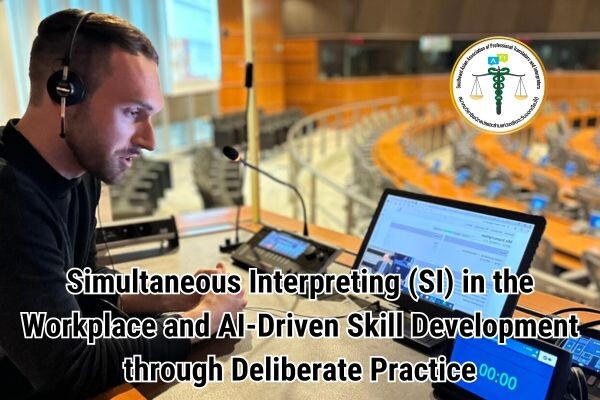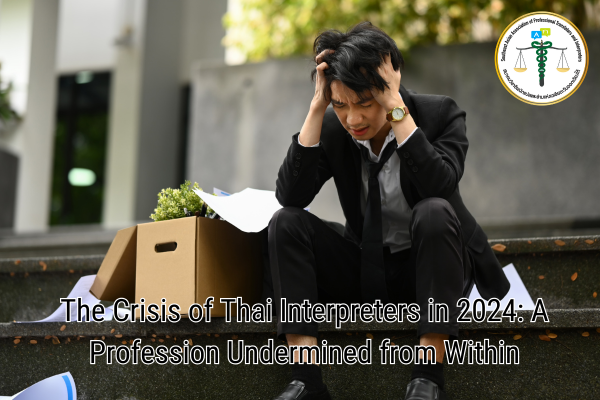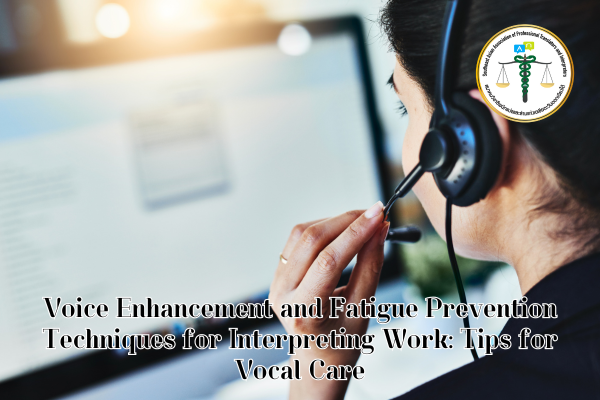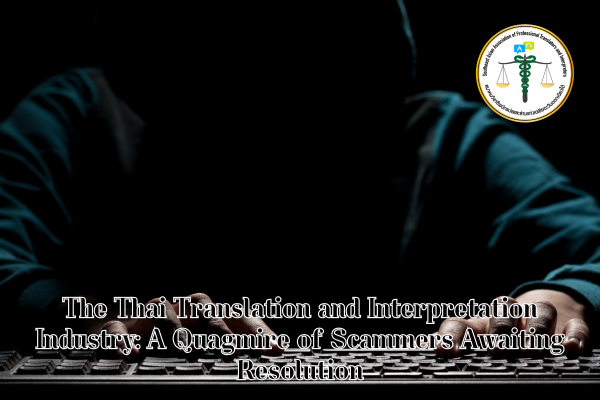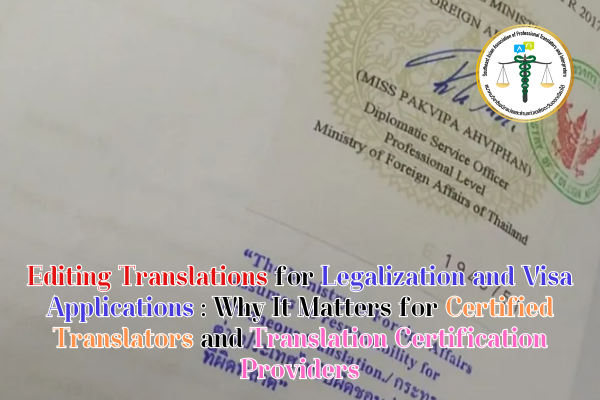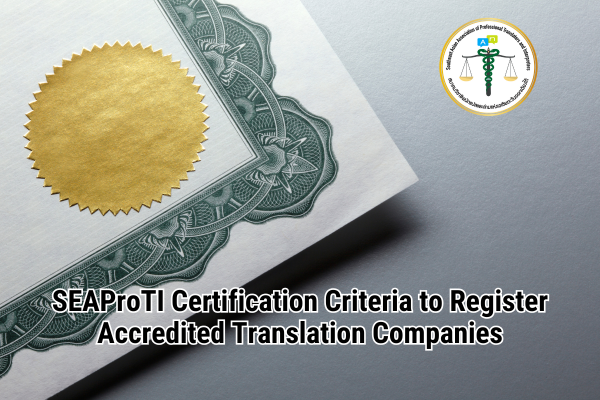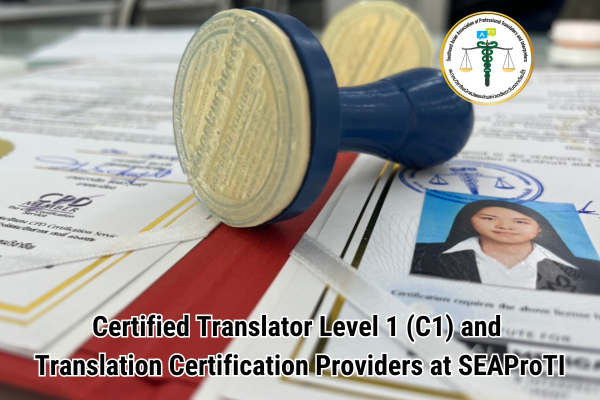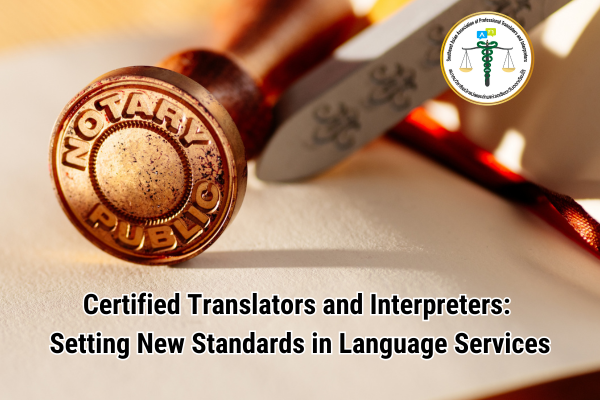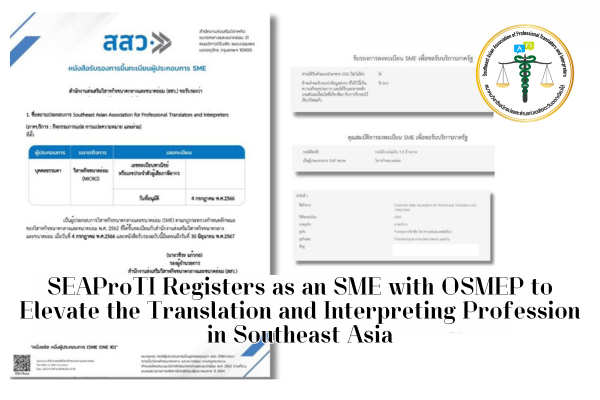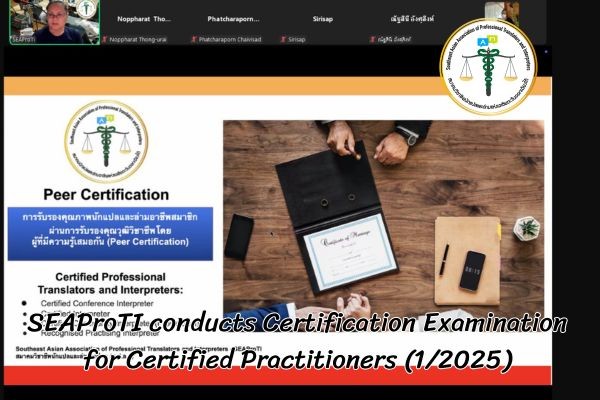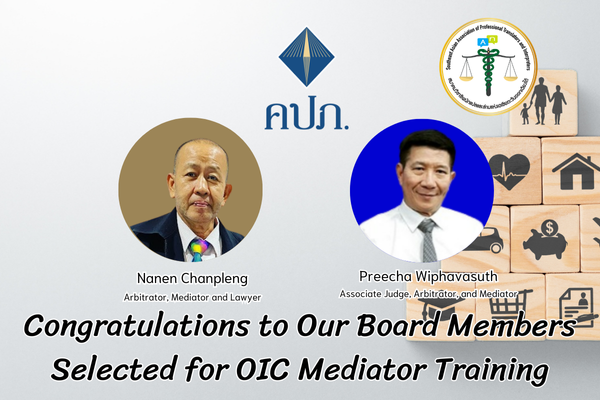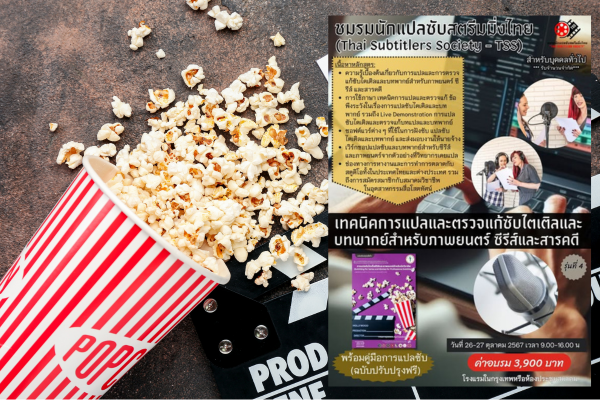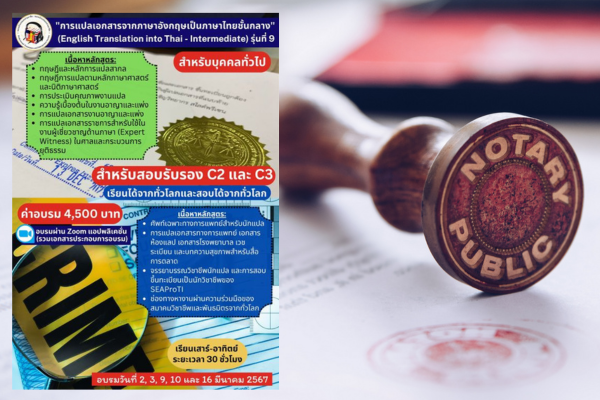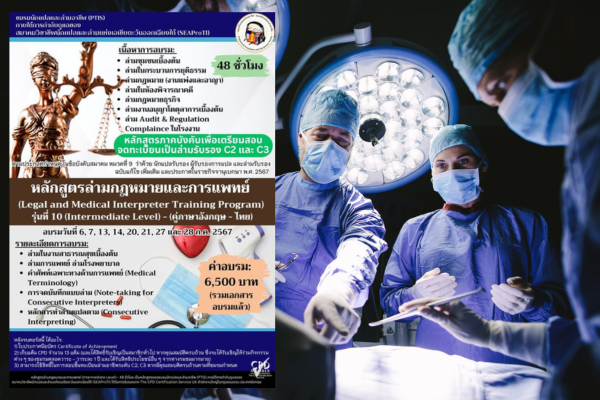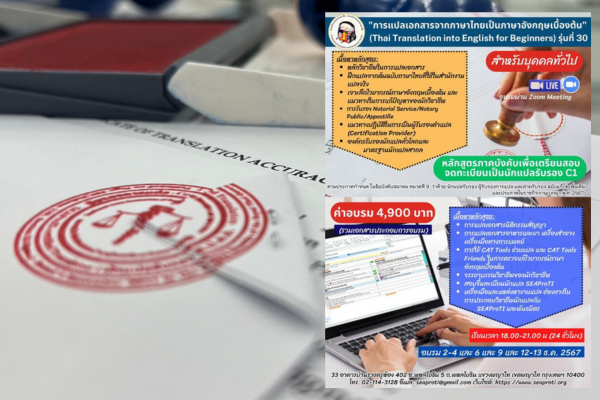Simultaneous Interpreting (SI) in the Workplace
and AI-Driven Skill Development through Deliberate Practice
17 February 2025, Bangkok – Simultaneous interpreting (SI) is widely used in various workplace settings, including international conferences, business negotiations, court proceedings, medical interpreting, and corporate meetings. The practice of SI in the workplace takes several forms:
1. Booth-Based Interpreting (On-Site Booth Interpreting)
- Interpreters work in soundproof booths using headsets to receive speech from the speaker.
- Commonly used in high-level conferences such as those held by the UN, EU, and multinational corporations.
- Requires strong teamwork and time-sharing between booth partners.
2. Remote Simultaneous Interpreting (RSI)
- Conducted through online platforms like KUDO, Interprefy, and VoiceBoxer.
- Interpreters work remotely via the internet without traveling to the event venue.
- Challenges include technical issues, high cognitive load, and limited communication with event organizers.
3. Whispered Interpreting (Chuchotage)
- Used when only one or two listeners require interpretation.
- The interpreter whispers the translation directly to the listener without using equipment.
- Common in business negotiations and courtroom settings.
4. Portable Equipment SI
- Uses wireless microphones and headsets.
- Suitable for open-space interpreting, such as factory tours, museum visits, or field training.
5. Hybrid Workplace Interpreting and AI Integration
- Many organizations adopt a hybrid approach, combining in-booth and remote interpreting.
- AI-powered tools assist in terminology preparation but cannot replace human interpreters.
- AI and the Development of SI Skills through Deliberate Practice
Deliberate Practice is a structured approach to skill improvement, and AI is playing an increasing role in enhancing this method for SI training.
1. AI-Powered Speech Analysis and Feedback
- AI Speech-to-Text tools (e.g., Otter.ai, Whisper by OpenAI) help record and transcribe interpretations.
- AI analyzes fluency, pacing, and accuracy to provide interpreters with valuable feedback.
2. Automated SI Training Platforms
- AI-driven training tools like Interpretrain, Speechpool, and CAI tools simulate real-life SI scenarios.
- Adjustable speech speed and complexity allow interpreters to practice at different skill levels.
3. Real-Time AI Assistance for Interpreters
- AI-generated terminology databases help interpreters quickly find specialized vocabulary.
- Some RSI platforms are developing AI Predictive Text for efficient note-taking and keyword retrieval.
4. AI-Supported Deliberate Practice for SI
- Shadowing & Parroting: AI-generated speech samples enable interpreters to shadow various accents and speeds.
- Chunking & Reformulation: AI simulates sentences for interpreters to practice summarizing and restructuring speech.
- Self-Scoring Mechanisms: AI tools assess hesitations, articulation, and fluency.
5. AI-Powered Language Models for Contextual Learning
- GPT and other AI models assist in refining terminology, paraphrasing techniques, and learning domain-specific language.
- AI can generate industry-specific speech samples to provide interpreters with realistic practice material.
6. VR & AI-Driven Simultaneous Interpreting Training
- AI-powered virtual reality (VR) simulations immerse interpreters in realistic conference settings, such as UN meetings or courtrooms.
- Simulated audience reactions, background noise, and speaker interruptions help improve cognitive flexibility.
Conclusion
AI is becoming an essential tool in SI skill development by enhancing deliberate practice through automated speech analysis, scenario simulations, and personalized feedback. However, AI remains a supporting tool, not a replacement for human interpreters, as SI requires cultural sensitivity, real-time decision-making, and intuitive understanding—skills that AI has yet to fully replicate.
SEAProTI’s certified translators, translation certification providers, and certified interpreters:
The Southeast Asian Association of Professional Translators and Interpreters (SEAProTI) has officially announced the criteria and qualifications for individuals to register as “Certified Translators,” “Translation Certification Providers,” and “Certified Interpreters” under the association’s regulations. These guidelines are detailed in Sections 9 and 10 of the Royal Thai Government Gazette, issued by the Secretariat of the Cabinet under the Office of the Prime Minister of the Kingdom of Thailand, dated July 25, 2024, Volume 141, Part 66 Ng, Page 100.
To read the full publication, visit: the Royal Thai Government Gazette
การล่ามพูดพร้อม (Simultaneous Interpreting – SI) ในที่ทำงาน และการพัฒนาโดยใช้ AI ผ่านแนวทาง Deliberate Practice
17 กุมภาพันธ์ 2568, กรุงเทพมหานคร – การล่ามพูดพร้อม (Simultaneous Interpreting – SI) ถูกใช้งานอย่างแพร่หลายในหลายสถานที่ทำงาน เช่น การประชุมระดับนานาชาติ การเจรจาธุรกิจ การพิจารณาคดีในศาล การล่ามทางการแพทย์ และการล่ามในการประชุมขององค์กรระหว่างประเทศ วิธีการล่าม SI ในที่ทำงานมีหลายรูปแบบ ได้แก่
1. การล่ามในบูธ (On-Site Booth Interpreting)
- ใช้บูธกันเสียง (soundproof booth) และหูฟังเพื่อรับเสียงจากผู้พูด
- มักใช้ในการประชุมขนาดใหญ่ เช่น UN, EU และการประชุมขององค์กรข้ามชาติ
- ต้องมีทักษะการทำงานเป็นทีมและการแบ่งเวลากับล่ามร่วม
2. การล่ามพูดพร้อมทางไกล (Remote Simultaneous Interpreting – RSI)
- ใช้แพลตฟอร์มออนไลน์ เช่น KUDO, Interprefy, VoiceBoxer
- ล่ามจากระยะไกลผ่านอินเทอร์เน็ต โดยไม่ต้องเดินทางไปยังสถานที่จัดงาน
- มีข้อท้าทาย เช่น ปัญหาทางเทคนิค ภาระทางปัญญาสูง และข้อจำกัดในการสื่อสารกับผู้จัดงาน
3. การล่ามแบบกระซิบ (Chuchotage – Whispered Interpreting)
- ใช้เมื่อมีผู้ฟังเพียง 1-2 คน
- ล่ามกระซิบคำแปลให้ผู้ฟังโดยไม่ต้องใช้เครื่องมือ
- นิยมใช้ในการประชุมทางธุรกิจและการพิจารณาคดีในศาล
4. การล่ามโดยใช้เครื่องช่วยพกพา (Portable Equipment SI)
- ใช้ไมโครโฟนและหูฟังแบบไร้สาย
- เหมาะสำหรับการล่ามในสถานที่เปิด เช่น การเยี่ยมชมโรงงาน การเดินชมพิพิธภัณฑ์ หรือการฝึกอบรมภาคสนาม
5. การล่ามในที่ทำงานแบบไฮบริดและการใช้ AI
- หลายองค์กรใช้การล่ามแบบไฮบริด ผสมระหว่างการล่ามในบูธและทางไกล
- ระบบ AI ช่วยสนับสนุนการเตรียมคำศัพท์ แต่ยังไม่สามารถแทนที่มนุษย์ได้
AI กับการพัฒนาทักษะล่ามพูดพร้อมผ่านแนวทาง Deliberate Practice
Deliberate Practice หรือ “การฝึกฝนโดยตั้งใจ” เป็นวิธีที่มีโครงสร้างสำหรับพัฒนาทักษะล่ามพูดพร้อม ซึ่ง AI ได้เข้ามามีบทบาทสำคัญในการเสริมสร้างทักษะนี้
1. AI วิเคราะห์เสียงและให้ข้อเสนอแนะ
- AI Speech-to-Text (เช่น Otter.ai, Whisper by OpenAI) ช่วยบันทึกและแปลงเสียงล่ามเป็นข้อความ
- วิเคราะห์จังหวะการพูด ความคล่องแคล่ว และความถูกต้องของการล่าม
2. แพลตฟอร์มฝึกล่าม SI อัตโนมัติ
- โปรแกรมฝึกล่าม เช่น Interpretrain, Speechpool, CAI tools ช่วยจำลองสถานการณ์ล่ามจริง
- สามารถปรับความเร็วและระดับความยากของเนื้อหาให้เหมาะสมกับผู้ฝึก
3. AI ช่วยในการเตรียมตัวล่ามแบบเรียลไทม์
- AI สามารถสร้างฐานข้อมูลคำศัพท์และช่วยให้ล่ามค้นหาคำศัพท์เฉพาะทางได้เร็วขึ้น
- บางแพลตฟอร์ม RSI เริ่มพัฒนา AI Predictive Text ช่วยจดบันทึกคำสำคัญ
4. AI สนับสนุนการฝึกฝนแบบเจาะจง (Deliberate Practice)
- การฝึก Shadowing และ Parroting: AI สร้างเสียงพูดให้ฝึกเลียนแบบในสำเนียงและความเร็วที่แตกต่างกัน
- Chunking & Reformulation: AI จำลองประโยคให้ฝึกย่อความและปรับโครงสร้างใหม่
- Self-Scoring AI: วิเคราะห์อัตราการหยุดชะงักและการออกเสียงผิด
5. โมเดลภาษาขั้นสูง (LLMs) สำหรับการเรียนรู้ตามบริบท
- GPT และ AI อื่น ๆ ช่วยปรับแต่งคำศัพท์ ฝึกการถอดความ และให้เนื้อหาสำหรับการฝึกล่ามในสาขาต่าง ๆ
- สามารถสร้างตัวอย่างสุนทรพจน์ในอุตสาหกรรมเฉพาะเพื่อให้ล่ามฝึกในบริบทที่ตรงกับงานจริง
6. การฝึกล่ามพูดพร้อมในโลกเสมือนจริง (VR & AI-Driven Training)
- AI + VR ช่วยสร้างสถานการณ์ล่ามเสมือนจริง เช่น การประชุม UN หรือศาล
- สร้างแรงกดดันที่คล้ายของจริง พร้อมเสียงรบกวนและปฏิกิริยาของผู้ฟัง
สรุปส่งท้าย
AI กำลังเข้ามามีบทบาทสำคัญในการฝึกทักษะล่ามพูดพร้อม โดยช่วยให้ Deliberate Practice มีประสิทธิภาพมากขึ้นผ่าน การวิเคราะห์เสียงอัตโนมัติ การจำลองสถานการณ์ และการสร้างคำแนะนำเฉพาะบุคคล อย่างไรก็ตาม AI เป็นเครื่องมือสนับสนุน ไม่ใช่ตัวแทนของมนุษย์ เนื่องจากล่ามพูดพร้อมต้องอาศัยความเข้าใจทางวัฒนธรรม สัญชาตญาณ และการตัดสินใจแบบเรียลไทม์ที่ AI ยังไม่สามารถทำได้
เกี่ยวกับนักแปลรับรอง ผู้รับรองการแปล และล่ามรับรองของสมาคมวิชาชีพนักแปลและล่ามแห่งเอเชียตะวันออกเฉียงใต้
สมาคมวิชาชีพนักแปลและล่ามแห่งเอเชียตะวันออกเฉียงใต้ (SEAProTI) ได้ประกาศหลักเกณฑ์และคุณสมบัติผู้ที่ขึ้นทะเบียนเป็น “นักแปลรับรอง (Certified Translators) และผู้รับรองการแปล (Translation Certification Providers) และล่ามรับรอง (Certified Interpreters)” ของสมาคม หมวดที่ 9 และหมวดที่ 10 ในราชกิจจานุเบกษา ของสำนักเลขาธิการคณะรัฐมนตรี ในสำนักนายกรัฐมนตรี แห่งราชอาณาจักรไทย ลงวันที่ 25 ก.ค. 2567 เล่มที่ 141 ตอนที่ 66 ง หน้า 100 อ่านฉบับเต็มได้ที่: นักแปลรับรอง ผู้รับรองการแปล และล่ามรับรอง

